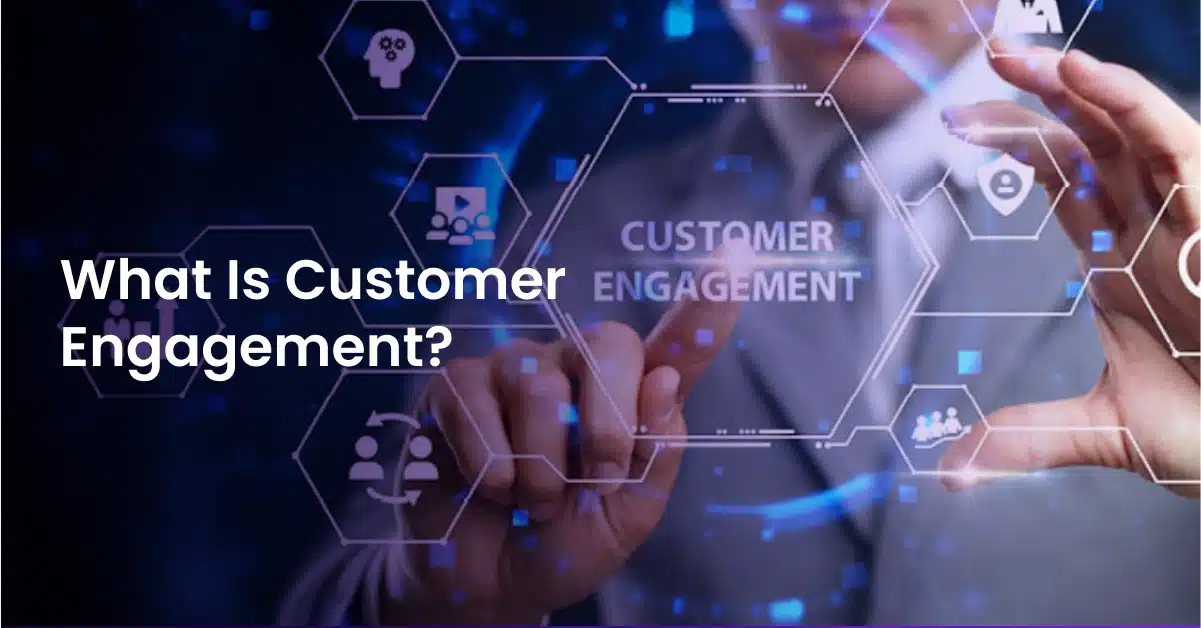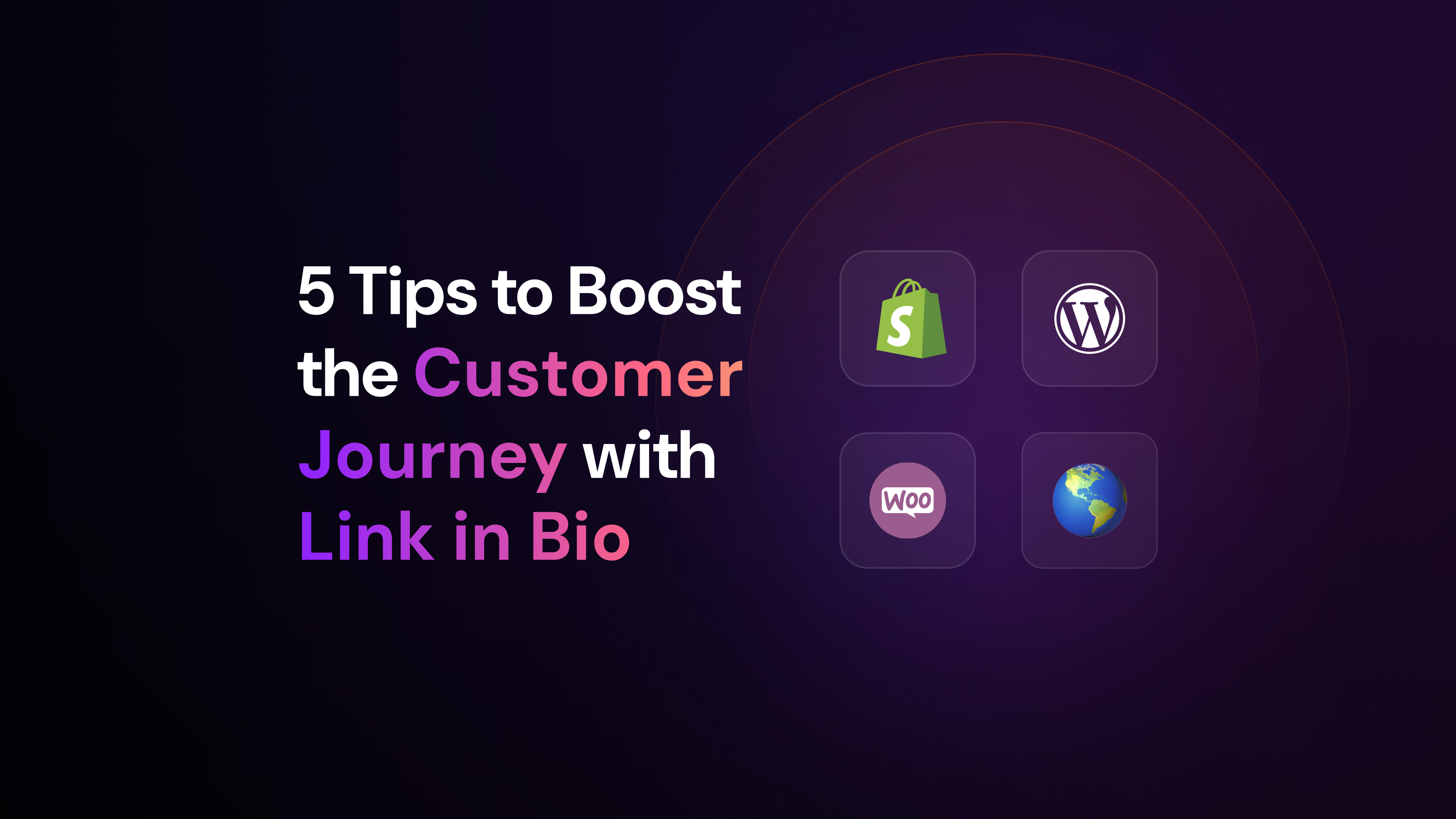The age of treating every customer the same is coming to an end. Thanks to Amazon, Netflix, and other digital community platforms, customers expect a personalized experience that reflects their interests. Without that, customers will start to view your brand as out of touch.
The good news? New strategies and technologies are making it easier than ever to connect with your customers. Before jumping into the specifics, stepping back and clarifying customer engagement is essential.
What is Customer Engagement?
A brand with strong customer engagement is one where customers have a deep, ongoing relationship. Instead of passing website visitors who forget about your content, highly engaged and loyal customers are different. They look forward to coming back to your website repeatedly. Many of them will even become ambassadors by sharing your content and reports on their social media profiles.
In other words, customer engagement is like having a group of trusted friends who would miss you if you were gone. Customer engagement helps brands develop customer loyalty, which will sustain your brand through disruption and downturns.
Why is Customer Engagement Important?
Customer engagement strategies are critically important for several reasons. Let’s dive right into them.
Reason 1: Customers Value Experiences, Not Just Products

Recent research from Salesforce found that 80% of customers value the experience of interacting with a brand. Your customers might use your products differently, according to their own interests, expectations and preferences. That means that offering a personalized experience is essential.
If the customer experience is boring or disappointing, achieving significant growth will likely be very difficult.
Reason 2: Governments Are Changing The Rules

Many people around the world are upset about how their personal information has been handled by digital companies. As a result, governments have imposed significant controls, fines, and laws that penalize companies that fail to protect companies. For instance, California and the European Union have imposed significant consumer rights and company obligations relating to personal data.
When your company focuses on customer engagement, the entire process tends to be transparent. Your customers will see that you’re gathering information from them and using it to provide a rich experience. In contrast, other strategies, such as relying on third-party cookies, are perceived as being less transparent.
Reason 3: The Decline and Fall of Third-Party Cookies

Engaging customers is all about developing a direct relationship with your audience. It’s a significant change from marketers’ strategies for over a decade: third-party cookies.
For years, marketers have relied on this data to track customer activity across the Internet quietly. While powerful for brands, this type of individual behavioral tracking has prompted significant privacy concerns. As a result, Apple has removed support for cookies from their browser. By 2024, Google Chrome – the world’s most popular browser – will also remove support for third-party cookies.
The end of third-party cookies means that your brand has to find other ways to achieve growth, like customer engagement,
Reason 4: ROI Personalized Experience

We saved the best for last: customer engagement and retention strategies deliver far greater ROI. How? Personalization can lift ROI on marketing significantly – McKinsey found it can drive a 10% increase in sales. First-party data, provided directly by the customer or audience member, is one of the most reliable ways to gather accurate data to fuel personalization.
—
Want to explore first-party data further and use it to increase revenue? Our explainer post has you covered: What Is First-Party Data?
—
Fortunately, there are some barriers to entry to delivering these kinds of experiences. That’s good news for you. Investing in customer engagement now gives you an edge over the competition.
Your marketing, content, and offers will be seen as much more relevant. That means more clicks, shares, and revenue without relying on third parties like social media platforms.
Customer engagement is robust and has a lot to offer. Yet, these benefits might seem a bit abstract. That’s why we’re breaking down the concept and looking at it in three primary use cases: publishing, marketing, and sales.
Effective Customer Engagement Strategies
Customer Engagement for Publishers
Most publishers earn most of their revenue from advertising and paid subscriptions. To achieve both goals, converting anonymous website visitors into registered users is vital.
There are several ways to apply customer engagement to your publishing business. For simplicity, assume you are focusing on boosting engagement with paid subscribers because you want to lift recurring revenue. The following strategies can help you to lift engagement.
Offer Small Group Experiences
Loneliness had already become a major social problem before the pandemic arrived – today, 1 in 3 Americans are lonely, according to Harvard. Publishers can lift engagement and offer chances to connect through small group experiences.
The concept is simple: invite subscribers to a “fireside chat” style event and limit attendance to 20-30 people. Running a smaller group experience makes it far easier to focus your content and allows your audience to meet like-minded people.
Offer Multiple Incentives For User Data
Maintaining high customer engagement means staying relevant to your audience even as their needs change. That means the standard approach of gathering audience preference and interest data at registration isn’t enough.
The solution is to give your audience more incentives to share data with you regularly. For instance, you might offer to extend your paid subscriber’s subscription by three months if they agree to participate in 3 short online surveys over 90 days. Beyond free access, some in your audience might be interested in sharing their insights with you if there is a prospect of being quoted or included in your coverage. Experiment with multiple incentives to see what connects best with your audience.
If you’re not in the publishing business, don’t worry. We’ve got your needs covered in the following two sections.
Customer Engagement for Marketing
Some, perhaps most, of your website visitors will not be ready to buy the first time they land on your website. Your website will likely be forgotten if you fail to offer an appealing experience. Here are some ways you can make your website more engaging for customers.
Use engagement technology on your website
Social experiences for your audience – like asking questions and reacting to others’ comments – can happen right on your website. There’s no need to rely on social media platforms as your only way of building an online community.
Installing Arena Live Chat on your website is a great way to make your website more engaging. You can install the software and launch a chat session in just a few minutes. The best part? You keep the audience’s attention focused on your website, which means more chances to earn conversions.
Create real-time experiences for your audience on your website
Live experiences like live shopping, live streaming, and even watching other people play games on Twitch are powerful ways to drive attention. There are multiple ways to draw significant attention. You can publish long-form content, including articles, videos, and podcasts. Engaging content is often the spark that draws the audience’s attention to your website.
You can also deliver interactive experiences for your audience. These experiences give people a reason to return to your website repeatedly. For example, you can use Arena Live Blog to provide coverage of a major industry event like CES if you are in the electronics field.
Customer Engagement for Sales
Customer engagement for sales is critical for any business focusing on long-term customer relationships. Use these strategies to keep your buyers coming back for more and more.
Enrich your loyalty program
Points, discounts, and other traditional incentives are all proven ways to keep customers buying. Unfortunately, standing out in the loyalty space is getting more difficult.
The average American had 7.6 active loyalty membership memberships in 2022, according to Statista, while the average number of total memberships was 16.6. That means that nearly half of loyalty program members are inactive!
One solution is to offer memorable experiences for your loyal members, like online events. For instance, you might invite your “VIP customers” to have early access to products in development or place custom requests. Going the extra mile to give your best customers something special can help to lift engagement.
Invite customers to share their experiences
You’re probably already encouraging reviews, recording customer interviews, and publishing case studies. Another way to invite your customers into your growth efforts is to shine a spotlight on your customers in digital events. For example, invite a few of your top customers to a panel discussion and leverage Live Chat to encourage discussion.
Using Arena For Customer Engagement
Highly engaging content and a deep understanding of your audience are crucial to customer engagement. Empowering your team with the right tools to create digital experiences for customers is crucial. Arena Live Chat makes building a digital community on your website easy. Learn more about using Arena to grow an online community for customer engagement.



